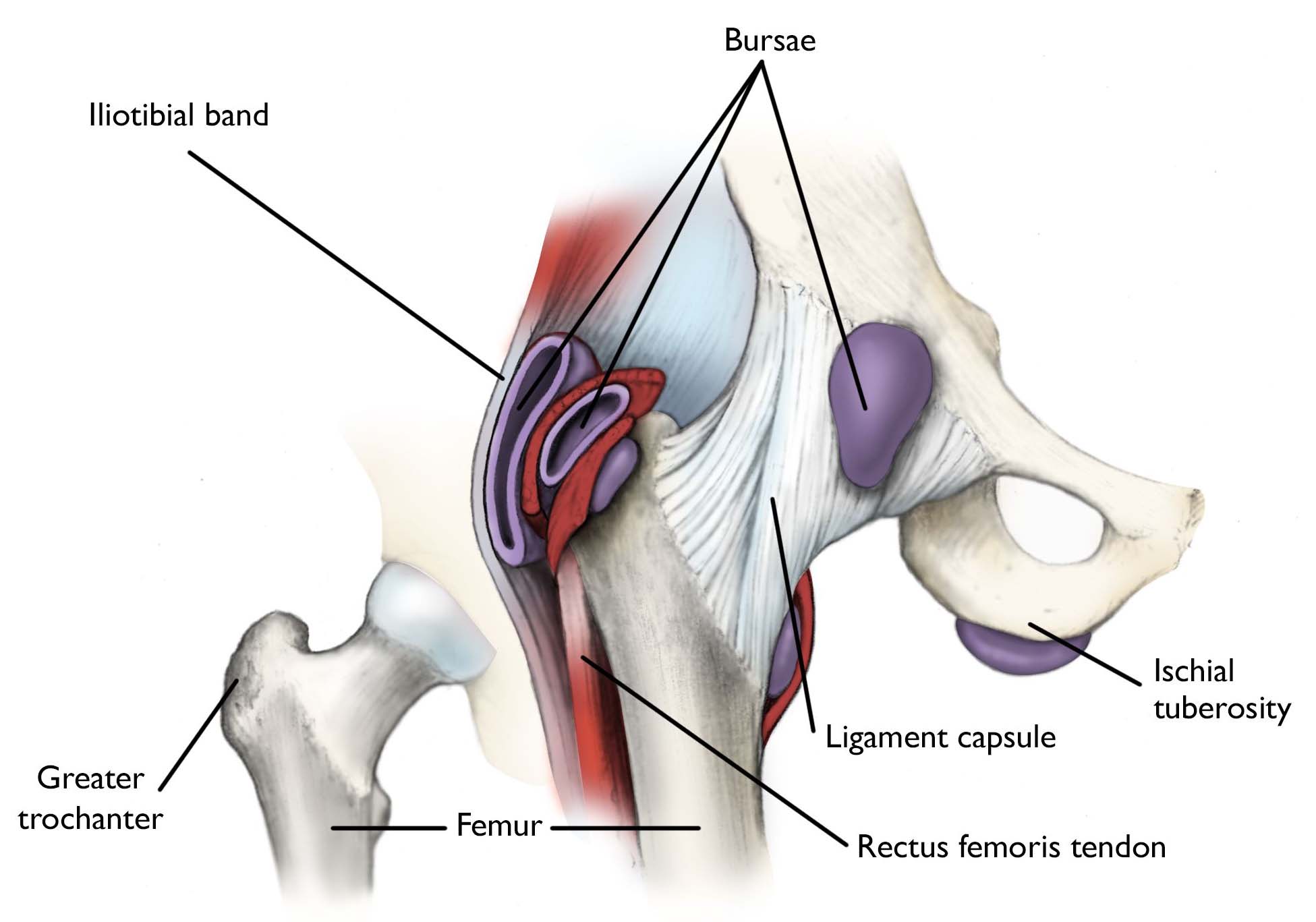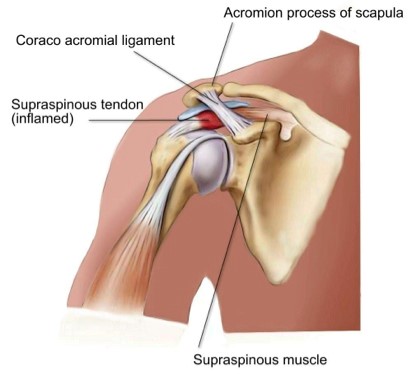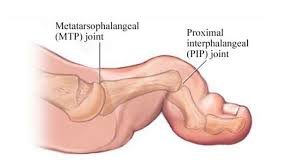Acromioclavicular joint separation is a fairly common injury among physically active people. Football players are often subject to AC separations. Many AC injuries don’t require surgery. Most patients recover with full function of the shoulder. The period of disability and discomfort ranges from a few days to 12 weeks depending on the severity of the separation. Disruption of the AC joint results in pain and instability in the entire shoulder and arm. The pain is most severe when the patient attempts overhead movements or tries to sleep on the affected side. There are certain situations ie. grade 4 or 5 separations, which may require surgery.
What is an AC joint separation?
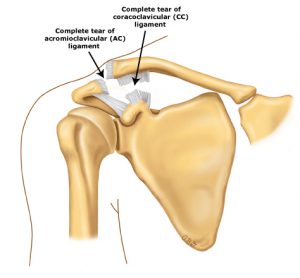 AC joint separation injuries are dislocations of the clavicle from the acromion. The severity of these depends on which supporting structures are damaged, and the extent of that damage. Tearing of the acromioclavicular ligament alone is not a serious injury, but when the coracoclavicular ligaments are ruptured, the result is major instability in the shoulder area.
AC joint separation injuries are dislocations of the clavicle from the acromion. The severity of these depends on which supporting structures are damaged, and the extent of that damage. Tearing of the acromioclavicular ligament alone is not a serious injury, but when the coracoclavicular ligaments are ruptured, the result is major instability in the shoulder area.
AC injuries are classified in three grades ranging from a mild dislocation to a complete separation:
Grade I – A slight displacement of the joint. The acromioclavicular ligament may be stretched or partially torn. This is the most common type of injury to the AC joint.
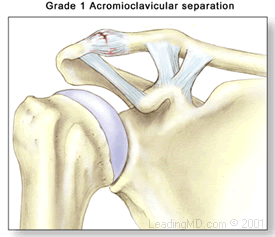
Grade II – A partial dislocation of the joint in which there may be some displacement that may not be obvious during a physical examination. The acromioclavicular ligament is completely torn, while the coracoclavicular ligaments remain intact.
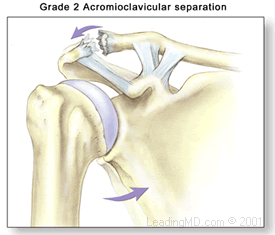
Grade III – A complete separation of the joint. The acromioclavicular ligament, the coracoclavicular ligaments, and the capsule surrounding the joint are torn. Usually, the displacement is obvious on clinical exam. Without any ligament support, the shoulder falls under the weight of the arm and the clavicle is pushed up, causing a bump on the shoulder.
There are a total of six grades of severity of AC separations. Grades I-III are the most common. Grades IV-VI are very uncommon and are usually the result of a very high-energy injury such as one that might occur in a motor vehicle accident. Grades IV-VI are all treated surgically because of the severe disruption of all the ligamentous support for the arm and shoulder.
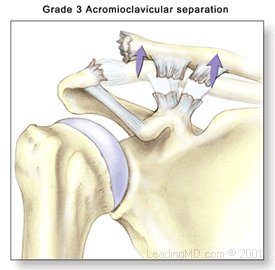
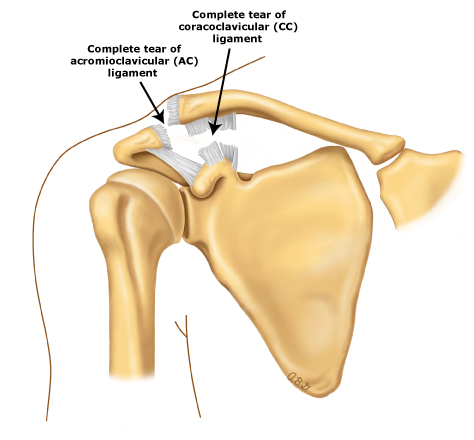
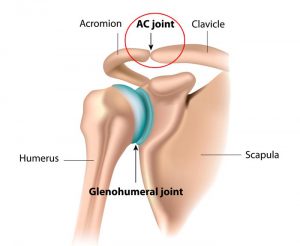 AC joint injuries occur where the acromion connects to the clavicle on the top of the shoulder. This joint helps maintain the position of the shoulder and is very important for shoulder control, motion, and strength. The joint is stabilized by a capsule and ligaments. Injury occurs when these structures get damaged. If severe the injury can lead to joint instability and pain. These type of injuries are usually the result of a sudden fall onto the shoulder. The AC joint is also a common place for arthritis to develop. This is usually the result of years of “wear and tear” on the joint and is common in weight lifters and laborers.
AC joint injuries occur where the acromion connects to the clavicle on the top of the shoulder. This joint helps maintain the position of the shoulder and is very important for shoulder control, motion, and strength. The joint is stabilized by a capsule and ligaments. Injury occurs when these structures get damaged. If severe the injury can lead to joint instability and pain. These type of injuries are usually the result of a sudden fall onto the shoulder. The AC joint is also a common place for arthritis to develop. This is usually the result of years of “wear and tear” on the joint and is common in weight lifters and laborers.